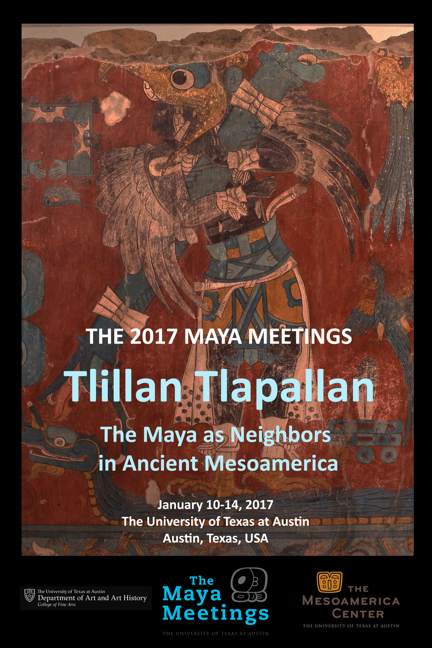TLILLAN TLAPALLAN: THE MAYA AS NEIGHBORS IN ANCIENT MESOAMERICA
January 10-14, 2017
The University of Texas Austin, Austin, TX
Tlillan Tlapallan, "Land of Writing and Painting," is a Nahuatl place of myth and history, evoking the lands far to the east on the Gulf of Mexico. In 2017 the UT Maya Meetings will be heading in new and different directions. Rather than focusing on a specific Maya site, region or timely topic within the Maya world, we will be looking outward to examine the ancient Maya through the lens of other Mesoamerican cultures and tradition, exploring external perspectives, cultural legacies, and cross-cultural connections.
For the Nahua of Postclassic Mexico Tlillan Tlapallan was the mythic place of writing and painting (“near the black-ink and color”), located far to the east near the coast. Here Quetzalcoatl was exiled and then resurrected as the Morning Star, according to the Codex Chimapopoca and Sahagún’s Florentine Codex. Over a century ago Eduard Seler suggested Tlillan Tlapallan had a real-world basis as a Nahuatl name for the Maya area, highlighting its deep legacy as a place of high arts, writing, and influential visual culture.
Among the questions we will be addressing are: What exactly were the cultural and historical connections between the Maya and early cultures in central Mexico, especially Teotihuacan? Why were “Maya-style” murals produced for the palace at Cacaxtla, in Tlaxcala? What was the artistic legacy of the Classic Maya for later Mesoamerican cultures such as the Aztecs? Some of these issues hinge on old and ever-present questions while others are new and cutting edge. Our wonderful line-up of presenters will probe these and other topics at the 2017 Texas Maya Meetings.


